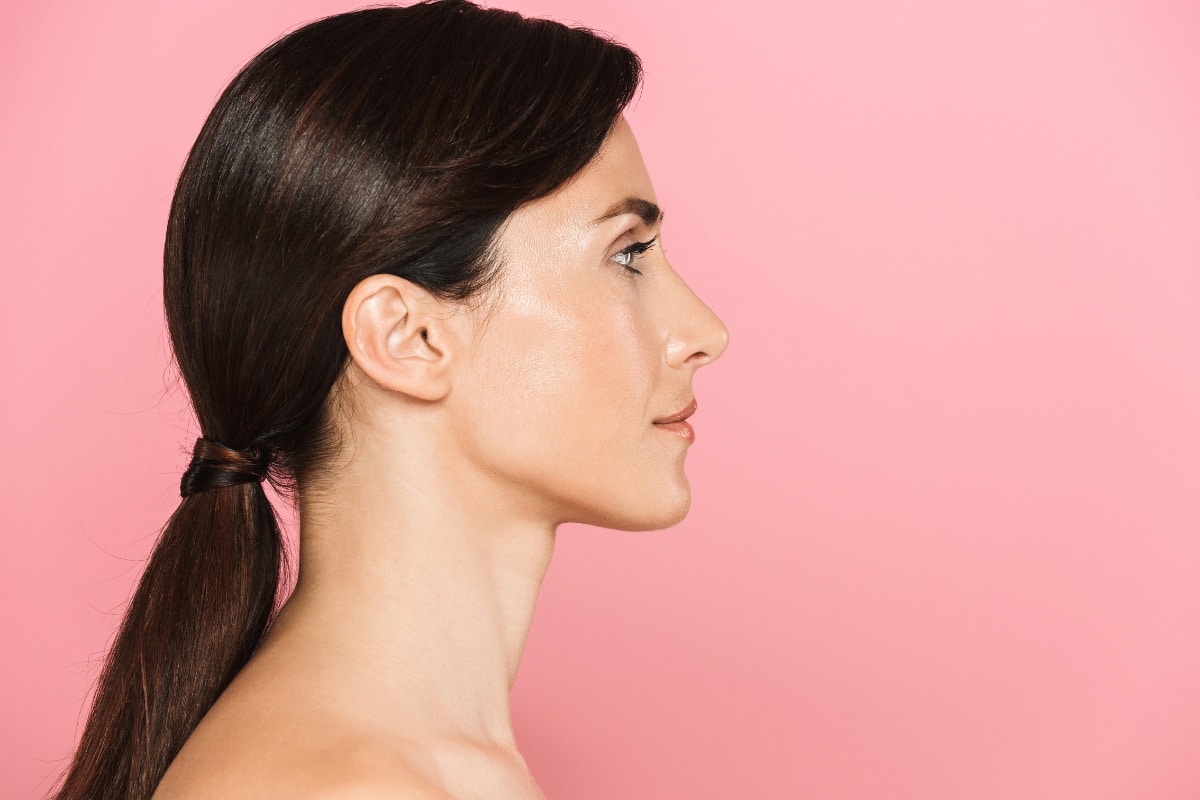Interested in enhancing your facial appearance but don’t know whether to go for buccal fat removal, neck liposuction, or both? Many people share this uncertainty. These two procedures can dramatically change a person’s facial structure, but they’re not without their pros and cons. Understand more about these procedures as we delve into their technical aspects, ideal candidates, and long-term impacts on facial appearance.

Benefits and Risks of Combining Buccal Fat Removal with Neck Liposuction
- Buccal fat removal and neck liposuction refine facial contours, creating a more defined and angular appearance by removing excess cheek and neck fat.
- Ideal candidates are those with stable weight, good skin elasticity, and a commitment to maintaining a healthy lifestyle post-surgery.
- The combined procedure offers the benefits of a single recovery period, cost-effectiveness, and improved overall facial aesthetics.
- Simultaneous procedures save time and reduce the total amount of anesthesia and surgery time needed.
- Maintaining a healthy lifestyle, including regular exercise, a balanced diet, and proper skincare, is crucial for preserving the results of combined facial contouring procedures.
WHAT ARE BUCCAL FAT REMOVAL AND NECK LIPOSUCTION?
Buccal fat pad removal and neck liposuction are common facial procedures that target specific areas on the face to improve contour and achieve a more defined appearance. Buccal fat removal in New Jersey, also known as a lipectomy, eliminates fat pads in the cheeks that give chubby cheeks, while neck liposuction removes excess fat from the neck area, often known as double chin, to accentuate the jawline.
DETERMINING IDEAL CANDIDATES FOR THE PROCEDURES
Ideal candidates for buccal fat removal and neck liposuction procedures are not just those dissatisfied with the prominence of their cheeks or neck fat. They should have a stable weight, as significant weight changes can alter results. Age is another important factor, with younger patients typically having more elastic skin that heals better.
Consideration also needs to be given to a person’s medical history, particularly any conditions affecting wound healing or blood clotting. Lastly, an ideal candidate should be committed to a healthy lifestyle, as this can enhance long-term results. The best way to determine eligibility is a thorough consultation with a certified plastic surgeon.
TECHNICAL ASPECTS OF BUCCAL FAT REMOVAL
Buccal lipectomy involves making a small incision inside the patient’s mouth to access the buccal fat pad, which is then carefully dissected and removed. The specific surgical technique depends on the patient’s anatomical structure and desired aesthetic outcome, with some surgeons opting to complete the removal in stages.
This technique ensures minimal scarring and a smooth recovery process, as the incisions are hidden inside the mouth. Careful handling of the surrounding tissues further ensures optimal aesthetic results and minimizes the possibility of post-procedural complications.
TECHNICAL ASPECTS OF NECK LIPOSUCTION
Neck liposuction includes making a small incision behind the chin or behind the ears and inserting a cannula to suction away fat cells. To achieve a natural and proportionate aesthetic appearance, the neck muscles are taken into account.
This technique is less intrusive than other types of plastic surgery, usually lasting one to two hours and conducted under local or general anesthesia. Unlike other plastic operations, neck liposuction targets fat without requiring substantial manipulation of the neck muscles.
Pros of Combining Facial Contouring Procedures
A single surgical session can result in improved facial aesthetics since both facial contouring treatments can be completed on the same day.

Eliminate Excess Fat
Combining fat pad removal with neck fat removal has the advantage of creating a synergistic effect that improves the patient’s face profile. These cosmetic surgery methods work together to reduce extra fat cells, resulting in a very positive modification in facial structure.
One Recovery Period
Simultaneous surgeries avoid the need for multiple healing periods, thus offering a more convenient option. The recovery time for liposuction and buccal fat removal typically lasts between two to four weeks. Therefore you can return to your normal activities faster.
Cost-Effective Treatment Option
Given that the expenses of two separate surgeries are avoided, combining these two cosmetic procedures could also be more affordable. Moreover, there is no need for the patient to make repeated trips to the clinic for every procedure.
Saving Time
Combining these treatments also saves a significant amount of time and money because it cuts down on the total amount of time spent in surgery and anesthesia, as well as the number of hospital trips and other expenses associated with scheduling the surgeries separately. This method also makes it possible to remove undesirable adipose tissue specifically, giving the plastic surgeon the ability to carefully plan and carry out both surgeries for the most visually attractive outcomes.
CONS OF COMBINING BUCCAL FAT AND NECK FAT REMOVAL
Equally important to understanding the benefits of combined buccal and neck fat removal is the awareness of potential risks and complications. Like any surgical procedure, both processes can expose patients to certain degrees of risk.
Higher Risk of Complications
Another disadvantage to consider is that combining surgeries may increase the chance of problems. The longer you spend under anesthesia, the higher your chances of developing breathing and heart rate problems. Furthermore, combining two procedures increases the risk of infection at the incision sites.
Poor Aesthetic Outcomes
Due to the sheer complexity of such a procedure, patients may also experience aesthetic risks. Post-operative scarring, asymmetrical outcomes, and uneven fat distribution are all possible risks when combination approach. However, these can be reduced through the skillful technique of an experienced plastic surgeon.
Delayed Healing Process
In contrast, problems such as delayed healing, edema, or pain may occur after surgery. Potential dangers can also increase if the patient has a preexisting health condition that must be examined prior to the surgery.
Regain Fatty Tissue
The weight and skin elasticity of the patient are important factors. Gaining weight may cause fat cells to swell, which could compromise the effectiveness of the operation. Similar to this, skin elasticity controls how effectively the skin adjusts after surgery. Because of their low flexibility, loose or extra skin may not conform well to the new shapes, which could affect the outcome. A facelift or neck lift, however, might be advised for skin tightening.
To reduce these possible side effects, skilled plastic surgeons must perform precise surgeries and patients must take great care of themselves afterward. To minimize risks, the patient must actively participate in the process by following their doctor’s advice.
MAXIMIZING RESULTS THROUGH HEALTHY LIFESTYLE
Following a face rejuvenation operation, a healthy lifestyle is vital for preserving a youthful appearance and maximizing the results.
- Engage in regular activities to keep a healthy weight and youthful appearance.
- Eat a balanced diet high in fruits, vegetables, and lean protein.
- Stay hydrated.
- Refrain from smoking and heavy alcohol consumption.
- Maintain continuous skincare, including moisturizing and sun protection, to keep the procedure’s outcomes.
Remember that each individual’s body responds differently, and it is essential to have realistic expectations and follow the recommended procedure-specific guidelines for optimal results.
COMPARING THE PROCEDURES WITH NON-SURGICAL TREATMENTS
When comparing buccal fat removal surgery and neck liposuction with non-surgical treatments like dermal fillers, several factors need consideration. Both minimally invasive procedures are outpatient, allowing the patient to go home the same day, while dermal fillers are faster, less invasive, and performed without any downtime at a clinic or plastic surgeon’s office.
Surgical procedures offer more permanent solutions by removing fat cells, whereas the effects of dermal fillers are temporary, typically lasting between six to eighteen months, depending on the type of filler used.
CONSULT WITH A FACIAL PLASTIC SURGEON
If you are interested in combining facial sculpting surgeries to achieve your aesthetic goals, it is essential to consult with a facial plastic surgeon. Dr. Kam in New Jersey can help you create a personalized treatment plan that meets your needs and helps you regain newfound confidence. With her specialized knowledge and expertise, she will provide the safe and effective results you desire while being mindful of your well-being.

